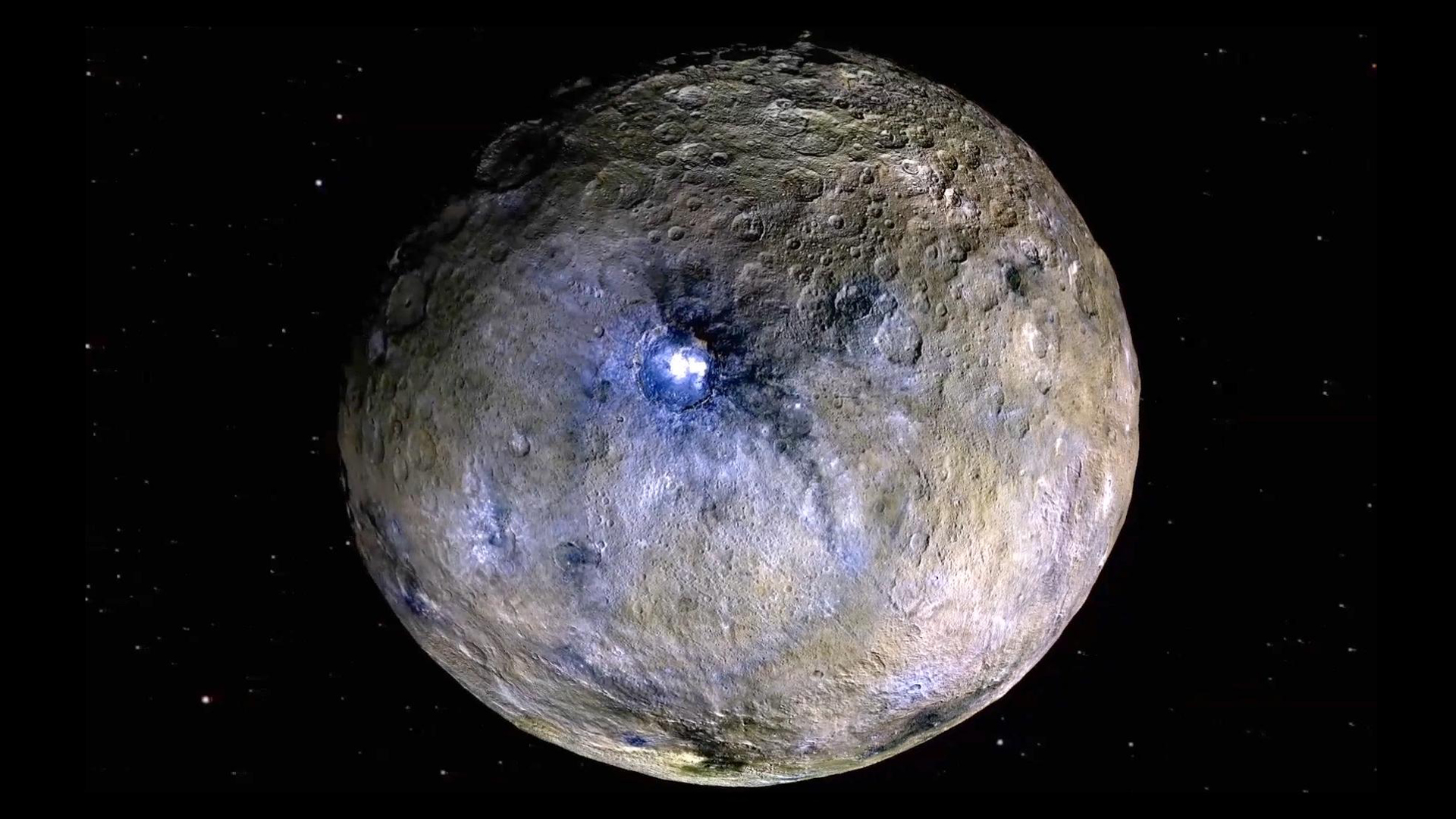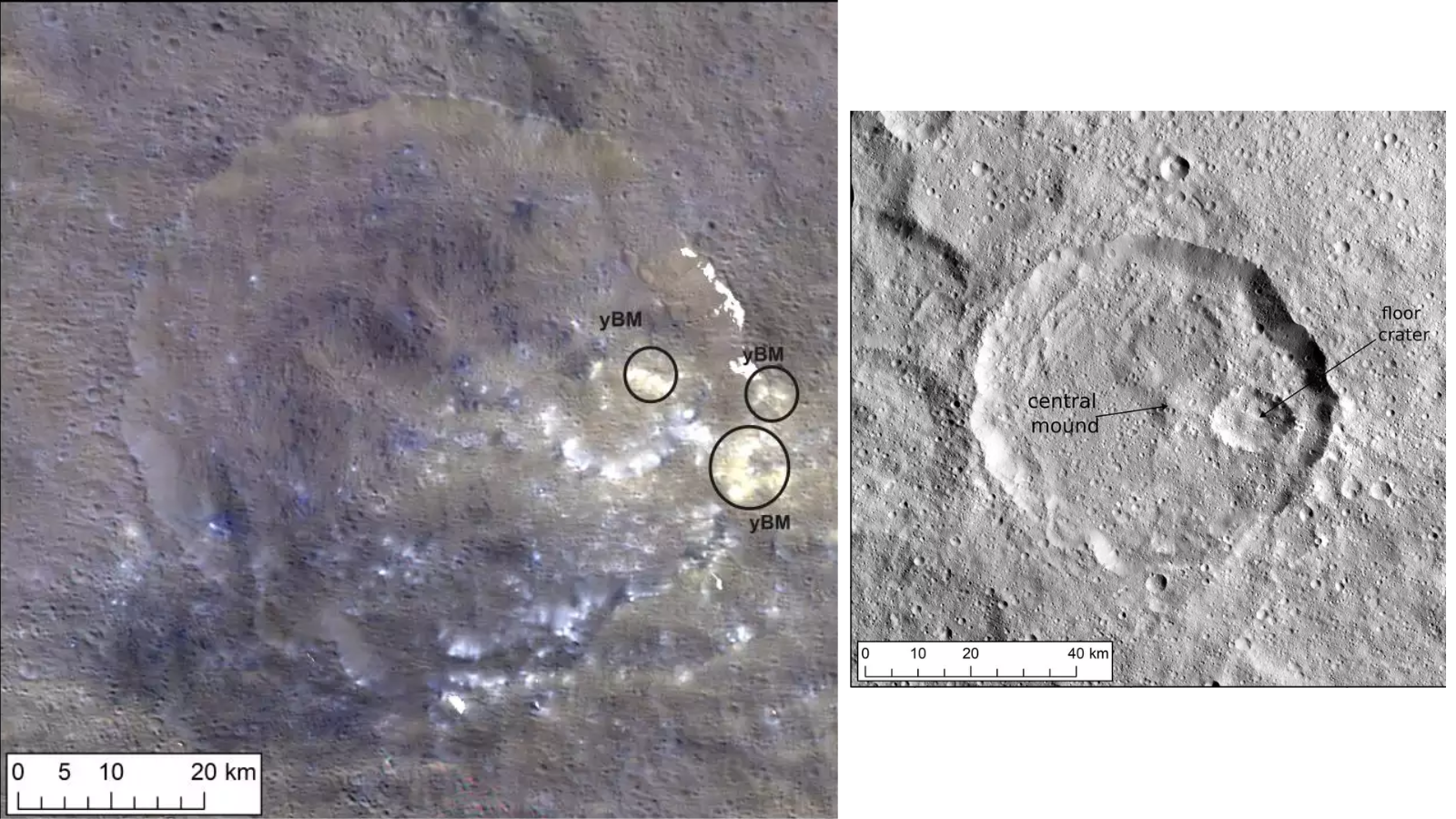Mystery of dwarf planet Ceres' origin may finally be solved, thanks to retired NASA spacecraft
Was Ceres born in the main asteroid belt, or did it migrate there from the outer solar system?

Scientists have used data from a long-retired NASA Dawn spacecraft to solve the mystery surrounding the origins of the strange dwarf planet Ceres.
Ceres currently resides in the main asteroid belt between Mars and Jupiter, and most theories surrounding its creation suggest that it was also born there. Yet, this dwarf planet has some strange characteristics that set it apart from other main asteroid belt objects.
This has led some scientists to speculate that the 596-mile (960-kilometer) wide dwarf planet may have originated at the outer edge of the solar system and may have migrated inwards to its current home.
Not only is Ceres the largest body in the main asteroid belt, but it also seems to have a more complex geology than its fellow occupants. One particular puzzle is the presence of frozen ammonia on Ceres, which the Dawn spacecraft found when studying the dwarf planet between 2015 and 2018.
Ammonia is thought to be stable only in the outer solar system, away from the sun and radiation that causes it to evaporate. Its presence, therefore, suggested that Ceres could have formed far from its current home.
Now, data collected from one of the oldest impact craters on Ceres, the 40-mile (64 km) wide Consus crater, could dispel the migration theory and show the dwarf planet indeed formed in the main asteroid belt.
"At 450 million years, Consus Crater is not particularly old by geological standards, but it is one of the oldest surviving structures on Ceres," Max-Planck Institute researcher and team member Ranjan Sarkar said in a statement. "Due to its deep excavation, it gives us access to processes that took place in the interior of Ceres over many billions of years - and is thus a kind of window into the dwarf planet's past."
Related: Dwarf planet Ceres could be a great place to hunt for alien life. Here's why
Breaking space news, the latest updates on rocket launches, skywatching events and more!
The answer may be ice volcanoes
Ceres is a cryovolcanic body with volcanoes that spew not scorching hot lava but frigid icy sludge. This icy volcanism has driven the evolution of the dwarf planet over the course of billions of years and could still be occurring today.
Studying the Conus Crater, one of Ceres' smaller impact craters located on the dwarf planet's southern hemisphere, revealed remnants of a brine that has risen to the dwarf planet's surface from its interior, specifically a liquid layer between the mantle and crust, over billions of years.
While most of the deposits found in Ceres' scattered impact craters show light-colored, whitish salt deposits, the material in isolated spots of the Conus Crater is more yellowish in hue. This material appears to be rich in ammonium, a type of ammonia with an extra hydrogen ion.
Scientists had previously figured the process needed to create ammonium wouldn't have worked as close to the sun as the main asteroid belt because it evaporates too quickly. These new findings are the first to connect ammonium with salty brine from Ceres’ interior, supporting the idea that Ceres is an asteroid belt native.

To reach their findings, the team assumed the building blocks of ammonium were part of the material that originally formed Ceres. Because it wouldn't have combined with the other materials in the dwarf planet's mantle, a thick layer of ammonium would have accumulated in the brine between the mantle and the dwarf planet's surface or crust. This blanket of ammonium would stretch through the entirety of Ceres.
Over billions of years, Ceres's cryovolcanoes would have brought this brine and its ammonium content to the crust, where it would have seeped into layered crystalline structures called phyllosilicates.
"The minerals in Ceres’ crust possibly absorbed the ammonium over many billions of years like a kind of sponge," team leader and former Lead Investigator of Dawn’s camera team Andreas Nathues said.
These would then be exposed by impacts upon Ceres by other asteroids in the main asteroid belt.
Outside of the Consus Crater, conspicuous patches of the yellowish-bright material investigated by the team are found in deep craters of Ceres. This suggests concentrations of ammonium are greater deeper in the core of the dwarf planet.
The speckles of this yellowish ammonium-rich material to the east of the Consus Crater are thought by the researchers to have been exposed by an asteroid collision around 280 million years ago.
The team's research is published in the Journal of Geophysical Research: Planets.

Robert Lea is a science journalist in the U.K. whose articles have been published in Physics World, New Scientist, Astronomy Magazine, All About Space, Newsweek and ZME Science. He also writes about science communication for Elsevier and the European Journal of Physics. Rob holds a bachelor of science degree in physics and astronomy from the U.K.’s Open University. Follow him on Twitter @sciencef1rst.
